Recent Posts
5 Star Reviews- From our Happy SERVPRO Customers
4/22/2024 (Permalink)
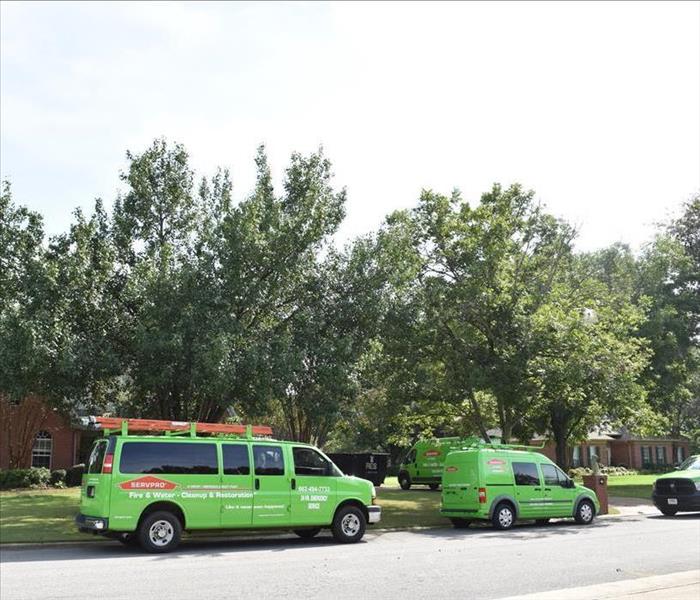 Call your local SERVPRO Today
662-690-6502
Call your local SERVPRO Today
662-690-6502
Three 5 Star Reviews- From our happy customers
Cody and Robert was very professional and polite. They both went above and beyond explaining the process. I am extremely satisfied with the service. I definitely will refer to family and friends. Considering the circumstances I am pleased to say it was quick and efficient.
-Kim Gamble
Our kitchen caught fire and we needed a clean up crew. I called SERVPRO in tupelo and spoke with Heather. She was amazing to deal with and made sure her crew took care of us as well. We could never thank Heather, Robert, bishop, Cody, Kasey, and Jonathan enough. From the first day to the last they stayed in touch and the communication was great! Thank you again SERVPRO of tupelo!
-Sarah Sansing
SERVPRO really came through for me, I called and the next day they were at my home, bright and early. I had the pleasure of meeting Kelsey and Heather, the dynamic duo, were so professional and very knowledgeable about the whole process. Their work were exceptional.
-Corey Crayton
We enjoy hearing from our satisfied customers, here at SERVPRO!
Understanding the Behavior of SMOKE
4/22/2024 (Permalink)
The damage to your property following a fire can often be complicated due to the unique behavior of smoke. There are two different types of smoke-wet and dry. As a result, there are different types of soot residue after a fire. The SERVPRO of Tupelo Professionals are thoroughly trained in fire cleanup and restoration and know the different types of smoke and their behavior patterns. Knowing this information is vital to proper restoration. Before restoration begins, The SERVPRO of Tupelo Professionals will survey the loss to determine the extent of impact from fire, smoke, heat, and moisture on the building materials and contents. The soot will then be tested to determine which type of smoke damage occurred. Pretesting determines the proper cleaning method and allows the SERVPRO of Tupelo Professionals to focus on saving your precious items.
The SERVPRO of Tupelo Professionals know smoke can penetrate various cavities within the structure, causing hidden damage and odor. Their knowledge of building systems helps them investigate how far smoke damage may have spread. The following are additional facts you may not know about smoke.
- Hot smoke migrates to cooler areas and upper levels of a structure.
- Smoke flows around plumbing systems, seeping through the holes used by pipes to go from floor to floor.
- The type of smoke may greatly affect the restoration process.
Different types of Smoke
- Wet Smoke (Plastic and Rubber) - Low heat, smoldering, pungent odor, sticky, smeary. Smoke webs are more difficult to clean
- Dry Smoke (Paper and Wood) – Fast burning, high temperatures, heat rises therefore smoke rises.
- Protein Fire Residue (Produced by evaporation of material rather than from a fire) – Virtually invisible, discolors paints and varnishes, extreme pungent odor.
- Fuel Oil Soot (Furnace Puff Backs) – While “puff backs” can create havoc for homeowners, SERVPRO Franchise Professionals can, in most cases, restore the contents and structure quickly.
- Other Types (Tear gas, fingerprint powder and fire extinguisher residue) – Special loss situations require special care.
The SERVPRO of Tupelo Professionals are trained to handle even the toughest losses. If your home or business suffers fire or smoke damage, contact the SERVPRO of Tupelo Franchise Professionals to help make it “Like it never even happened.”
Who Pays for Fire Damage in a Rental Property?
10/3/2023 (Permalink)
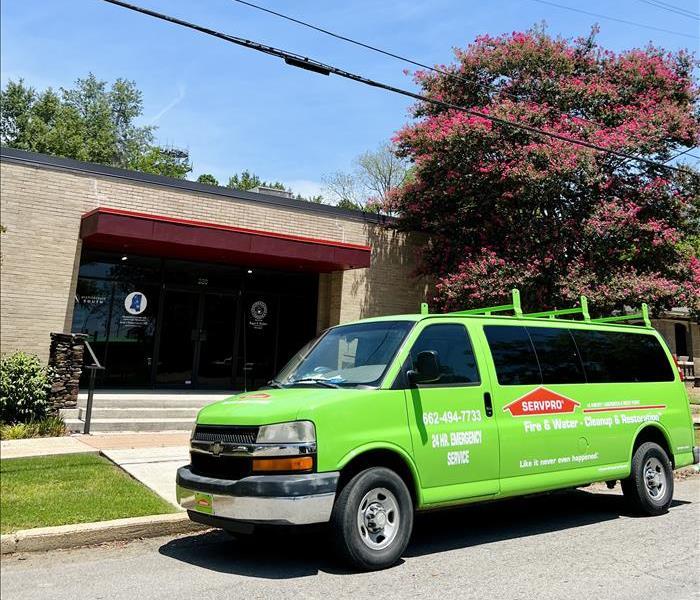 SERVPRO of Tupelo
SERVPRO of Amory/Aberdeen & West Point
662-690-6502
SERVPRO of Tupelo
SERVPRO of Amory/Aberdeen & West Point
662-690-6502
Renters' insurance is affordable and can protect against a variety of situations that could lead to damage or theft of your property.
Who Is Responsible for Fire Damage in a Rental Property?
Fire damage is a scary and intimidating event. When it happens, a lot of people ask this question: “Who is responsible in case of fire damage in a rental property?" The answer is that both the renter and the landlord are responsible for different parts of the building and its contents.
The Landlord’s Responsibilities:
The landlord is responsible for all structural damages caused by fire or other natural disasters that occur on their rental property like hurricanes, floods, or earthquakes. The tenant has full responsibility for their personal belongings and can file an insurance claim through their renter's insurance policy if they have one. If you need help understanding what your rights are during this stressful time, please feel free to reach out to us anytime.
Structural Damage to The Property
If the tenant's negligence was to blame for the fire, they will likely have to bear all the costs associated with repairs. However, if there were no known causes of ignition or negligence on behalf of the tenant and their guests or visitors, then your landlord may be held responsible for some expenses related to repairs following a fire at their rental property.
The first step in determining who pays for fire damage in a rental property is figuring out whether your landlord’s policy covers structural damages—the damage caused by fire spread through walls and floors rather than just flames themselves. Most insurance policies cover this type of structural damage if it is caused by external factors (like lightning strikes).
Personal Belongings
It’s important to know that renters’ insurance covers your belongings. If you rent an apartment and want to make sure your personal property is protected, it’s a good idea to invest in renters’ insurance.
This type of policy can be expensive, and landlords aren't required by law to ask tenants what kind of coverage they have. But it's still worth considering—especially if you're replacing expensive items like laptops or jewelry.
You can buy renter's insurance online or through an independent broker who specializes in this type of coverage.
The tenant has full responsibility for their personal belongings.
If you are a tenant, your insurance should cover damage to your personal belongings. This is an optional service that is usually very inexpensive, and it is a good investment if you want to avoid paying out of pocket for damages.
Even if the landlord has insurance on the property, they are not responsible for damage to your personal belongings unless there was negligence involved (for example: someone else caused the fire at the house). In this case, the landlord's insurance will take care of anything that happened during their time of ownership and responsibility over the property. However, if there was no negligence involved in causing damage to one's possessions then tenants have full responsibility for their things through their renters' policy or homeowners' policy with an endorsement stating content coverage while away from home.
The most important thing to remember is that both the tenant and landlord are responsible for certain parts of the building and its contents. If you need help understanding your responsibilities, contact us today!
SERVPRO of Tupelo
SERVPRO of Amory/Aberdeen & West Point
662-690-6502
Water Damage Services -Start to Finish at SERVPRO
9/19/2023 (Permalink)
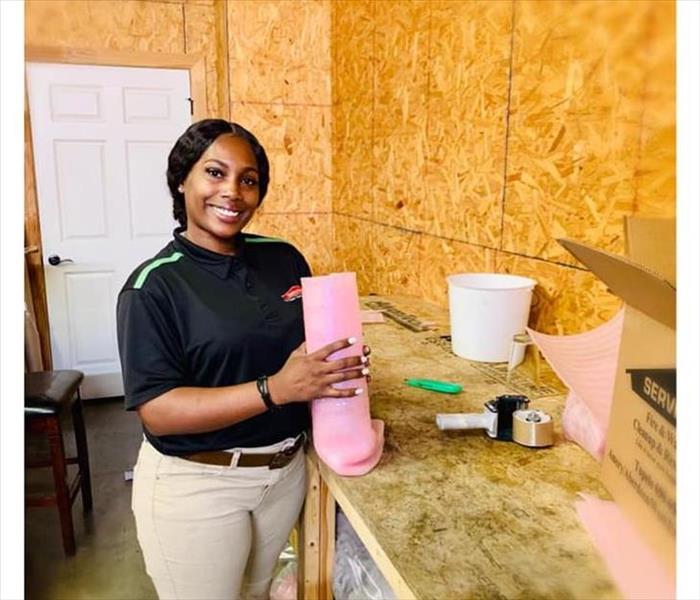 Call your local SERVPRO today!
(662)690-6502
Call your local SERVPRO today!
(662)690-6502
SERVPRO of Tupelo, SERVPRO of Amory, Aberdeen, and West Point is available 24 hours a day for water emergencies, large or small. When you are dealing with water damage, immediate action is crucial. A delay of just a few hours can greatly increase the severity of the water damage.
We Answer the Phone Ready to Help you!
We understand that when you call us, you may be feeling confused, stressed, and vulnerable. You need an expert to guide you through this crisis. SERVPRO has the specific water damage training and experience to help you through this tough time. We specialize in water damage restoration—in fact, it's the cornerstone of our business.
What to Expect
When you call, we will ask several questions regarding your water damage emergency. These questions will help us determine what equipment and resources to bring, including how many trained SERVPRO professionals may be needed.
Our SERVPRO Representative will ask several questions:
- Your name and contact information
- Your insurance information (if applicable)
- The street address of the water-damaged home or business
- When did the flooding or water damage occur?
- What caused the water damage (if known)?
- Is there electricity available (on-site)?
SERVPRO of Tupelo, SERVPRO of Amory, Aberdeen, and West Point is ready to help you with the cleanup and restoration of residential and commercial property after a fire, smoke, or water damage event. Our staff is highly trained in property damage restoration. From initial and ongoing training at SERVPRO’s corporate training facility to regular IICRC-industry certification, rest assured our staff is equipped with the knowledge to restore your property.
Call your local SERVPRO today!
(662)690-6502
Did you know? Soot & Water Account for Most of the Damage in a Fire
9/19/2023 (Permalink)
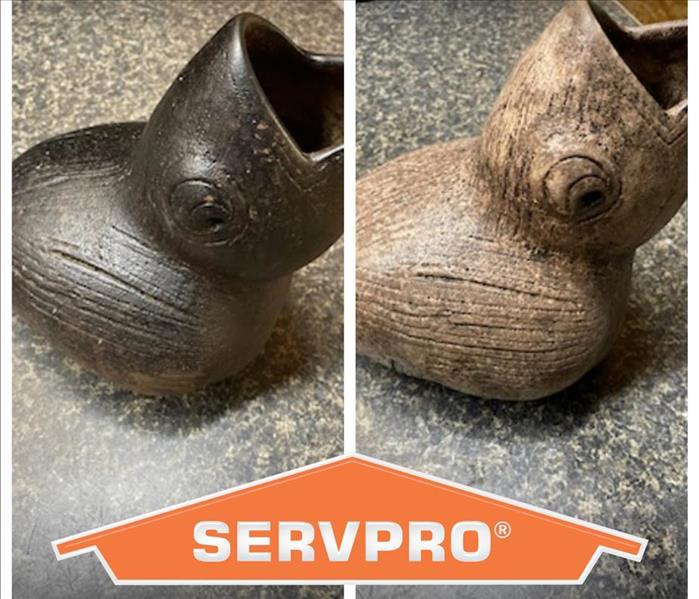 Call your local SERVPRO today!
(662)690-6502
Call your local SERVPRO today!
(662)690-6502
When a fire occurs in a building or home, we naturally think of items getting burned up and the structure being charred and compromised. Fire response times are usually good these days for a variety of reasons, namely technology. Most fires are able to be put out in a reasonable amount of time before serious structural damage has occurred. Most often, the fire damage is due to water and soot.
Water can first enter the fray from sprinkler systems, drowning whole room or rooms in water. However, the main source of water stems from Fire Fighters spraying down many rooms while punching holes in the ceiling.
Once the fire is put out, the entirety of the damage can be observed. The heat of the fire causes soot particles to rise and float around the structure. In most fires, you will find the most blackened areas to be at the source and on the ceiling. The soot will eventually settle on items all around the building with the assistance of the HVAC system. Which brings into play another issue, the HVAC system can be thoroughly covered and will need cleaned if not replaced.
Depending on the fire, soot can be greasy and hard to clean. When it comes to fire damage restoration of contents, they can typically be divided into 2 groups, porous and non-porous. Non-porous are more hard surface items like glass, metal and wood. These can usually be cleaned with specific soot solutions. Porous items like clothes and fabric on furniture is more challenging to clean. With special chemicals and processes, there can be a pretty good success rate but there still will be some unsalvageable items.
If you need assistance getting back to normal after a fire, please give us a call. We are here and happy to help!
Call your local SERVPRO today!
(662)690-6502
How to Eliminate Odor after Fire Damage
4/4/2023 (Permalink)
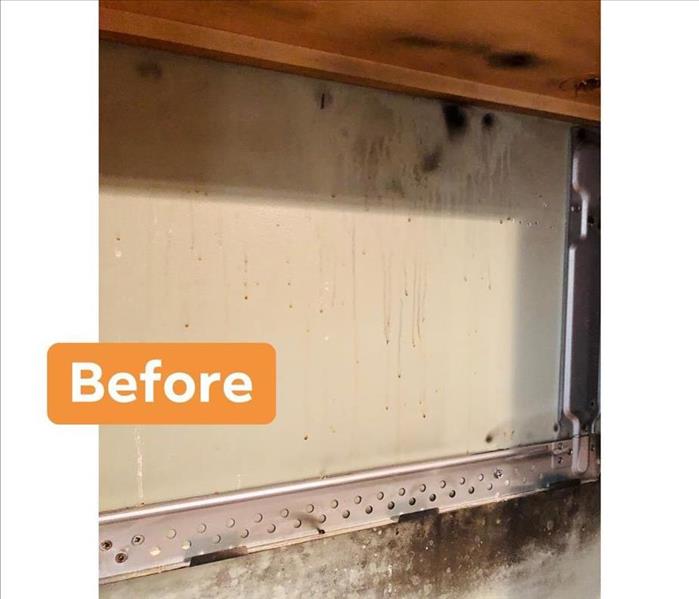 Contact SERVPRO of Tupelo, SERVPRO of Amory Aberdeen & West Point, for your fire damage restoration needs.
662-690-6502
Contact SERVPRO of Tupelo, SERVPRO of Amory Aberdeen & West Point, for your fire damage restoration needs.
662-690-6502
Fire damage often encompasses both remediation and odor control. Call SERVPRO of Tupelo, SERVPRO of Amory Aberdeen & West Point 24/7. Our team can handle all aspects of the situation at hand.
SERVPRO Fire Damage Restoration Incorporates Odor Control
Housefires require extensive cleanup. Most of the home needs to be carefully sorted into salvageable and non-salvageable materials.
Charred materials relating to structure or belongings are thrown away in large dumpsters, while replacement materials must be sourced and installed. These processes can be difficult to manage alongside work and other commitments, which is why most homeowners rely on a professional service to help with:
- Fire Restoration
- Fire debris removal
- Fire damage restoration
One ever-present challenge of fire damage restoration is odor control. The rule of thumb when it comes to odor control is to eliminate all
odor-causing materials. These can include porous parts of the building assembly or the removal of smoke soils from appliances and furniture. General deodorization steps can help curtail odors, but in some situations, the smell remains after completing these tasks.
Step-by-step odor removal
- Removing non-salvageable charred materials from the home and preventing the spread of ash by sealing items in polyethylene bags.
- Saturating remaining charred materials with water-based deodorants using direct spray application.
- Cleaning parts of the home that are most heavily contaminated with soot and smoke residues before drying the structure and surfaces.
Sometimes odors can remain after completing removal steps. These situations often result from odor particles reaching confined areas. The solution to stubborn malodors in confined spaces is to provide assisted ventilation using venting fans or air movers. If that fails, deploying an activated oxygen unit or fumigating the entire structure can eliminate smoke odors for good.
Odors come from various sources, making it difficult to pinpoint a single method solution. SERVPRO technicians rely on multiple restoration methods to control odors and often repeat the same process several times to ensure that odors are managed appropriately.
Fighting odor requires expertise and equipment.
Contact SERVPRO of Tupelo, SERVPRO of Amory Aberdeen & West Point, for your fire damage restoration needs.
662-690-6502
Has a Storm Damaged The Basement of Your Home? 4 Steps to Take When Your Home Basement Is Flooded.
6/28/2022 (Permalink)
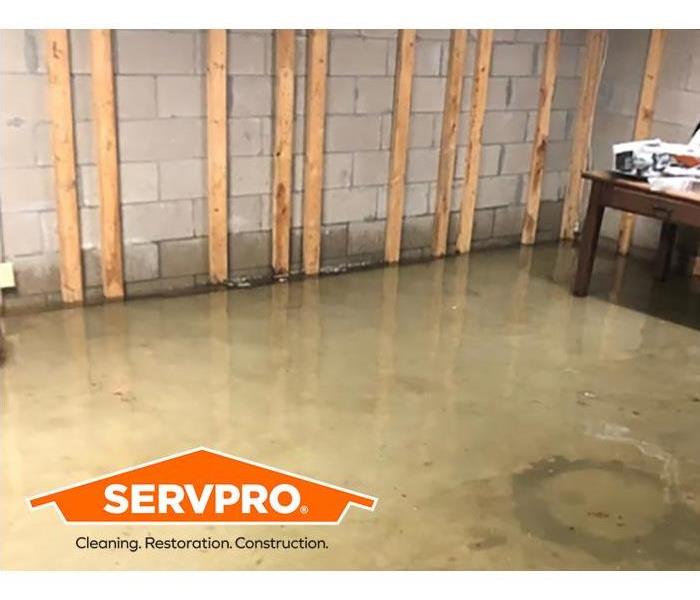 Call your local SERVPRO today!
662-690-6502
Call your local SERVPRO today!
662-690-6502
How to Deal With a Flooded Basement
Unfortunately, many homeowners have experienced a basement flood at one time or another. If you have standing water down there, it is vital to know how to deal with it. Before you begin the cleanup process, follow these steps.
1. Shut Off the Electricity
Before anything else, you want to shut off the electricity and power to the basement. Not doing so could lead to injuries, so take every precaution possible. If you are unsure of how to do this, it is best to call a water damage specialist.
2. Find the Source
If the basement flood was caused by rainfall, you can go ahead and begin the cleanup process. Otherwise, you need to find the source. To prevent any more contamination to the area, you should shut off the water. Once you have located the cause, you either need to fix it yourself or call a professional to come help.
3. Remove the Water
Getting rid of the water can take time. What you use depends on how badly the room was flooded. Sump pumps or pool pumps can be effective. If there is only a small amount of liquid on the ground, you may even be able to use a mop.
4. Call Your Insurance Company
You want to check on what type of insurance coverage you have after an ordeal like this. Oftentimes the company is more likely to pay if the problem is treated quickly and was not caused by negligence on your part. Using a trusted business to help with the cleanup may also help you get a better payout.
It is important to remember that a basement flood can be extremely dangerous. Take the utmost care when handling the damage yourself. If you feel at all uncomfortable or unsafe, call SERVPRO of Tupelo SERVPRO of Amory/Aberdeen & West Point, to come to help you!
4TH of July is Almost Here! Practice Firework Safety to Prevent Home Damage and Bodily Injury.
6/28/2022 (Permalink)
 Call your local SERVPRO today!
662-690-6502
Call your local SERVPRO today!
662-690-6502
Celebrating the summer brings gatherings, food, and on holidays - fireworks. While the lights of a backyard firework show or small handheld sparkler can be fun there are dangers underneath the lights. When celebrating Independence Day, The National Fire Protection Association estimates sparklers account for more than 28% of emergency room visits due to fireworks, and of nearly half of all fires reported 47% were started on July 4th due to fireworks.
If misused, fireworks can be dangerous. Professionals disagree on the use of personal use of fireworks. Some state they should only be used by trained pyrotechnicians and others tout a use cautiously approach. HOA’s have weighed in on the matter usually erring on the side of caution and banning them from neighborhoods altogether.
The firework-related injury stats can understandably give HOA’s cause for concern. Fireworks cause an average of nearly 18,500 reported fires across the country each year. Smaller hand-held sparklers account for more than 25% of emergency room fireworks injuries. The average sparkler is 1200 degrees Fahrenheit. That’s 300 degrees hotter than what is required to melt glass, at 900 degrees Fahrenheit!
Other homeowner concerns about the fire from fireworks include:
- Roof shingles
- Grass and landscaping
- Siding
- Vehicles filled with gasoline in the driveway or street
- Fencing
- Decks
If you do decide to have a home firework show please do so safely. Here are some tips to help prevent fire from ruining your home celebration:
- Light fireworks on pavement or concrete a safe distance away from your home
- Light fireworks one at a time
- NEVER attempt to relight a dud firework
- Keep hair and loose clothing tied back
- Keep a bucket of water close and a primed water hose ready
The safest way to enjoy fireworks is to see a display put on by professionals. This allows you to enjoy the show with little worry of bodily harm or property damage. SERVPRO wants you to enjoy the festivities safely with friends and family.
Happy Independence Day!
www.nfpa.org
Keep this in Mind... it’s the Water You don't See
6/16/2022 (Permalink)
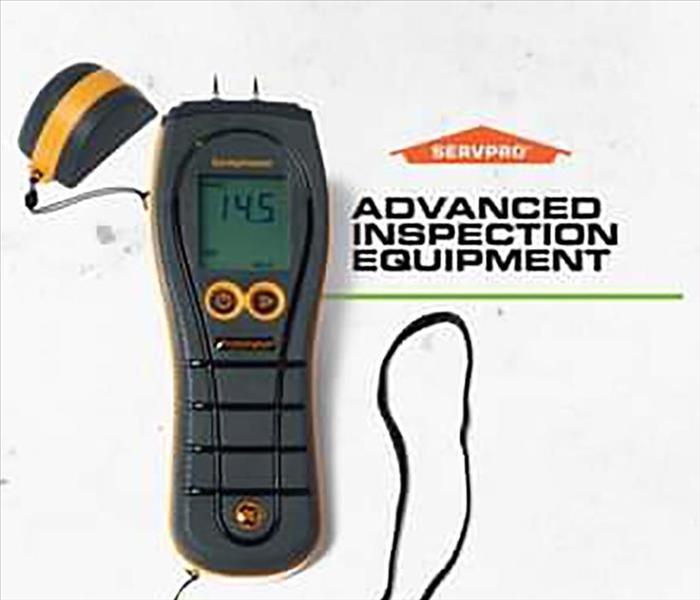 Call us today at 662-690-6502
Call us today at 662-690-6502
Even minimal water damages have the potential to cause serious structural and indoor air quality issues over time.
The key to avoiding costly future restoration is to handle every water problem as a real threat to your property. SERVPRO has the equipment, training, and experience to find and dry unseen water before secondary damages occur. The proper equipment makes a measurable difference in reducing the damage expense during a fire or water loss. When time matters, technology, and equipment must be counted on to perform. SERVPRO of Tupelo, SERVPRO of Amory/Aberdeen & West Point will answer your call with rapid action and a full arsenal of drying equipment.
Here are a few of the tools we use.
- Moisture Sensors are used to detect moisture in carpets, baseboards, and walls.
- Thermo hygrometers measure temperature and relative humidity. When armed with this information, we can calculate and create an environment most conducive to drying. When facing a contaminated water loss, it is not only important to dry the structure, but the structure must also be disinfected and often deodorized.
- Moisture Meters are used to determine the actual moisture content of various materials. The moisture tester provides accurate readings, allowing SERVPRO to monitor the drying process.
- Thermal Foggers dispense solvent-based products by creating a dense fog. The fog consists of tiny particles of deodorant solution that attach to and neutralize odor-causing particles.
- Ultra Low-Volume (ULV) Foggers will atomize liquid deodorizing agents, producing a fine mist that can easily penetrate the site where odor-causing residues may accumulate.
The bottom line is that SERVPRO of Tupelo, SERVPRO of Amory/Aberdeen & West Point has the training and equipment to help make it “Like it never even happened.”
Call us today at 662-690-6502
10 Helpful tricks to help out you & your home this Summer
6/13/2022 (Permalink)
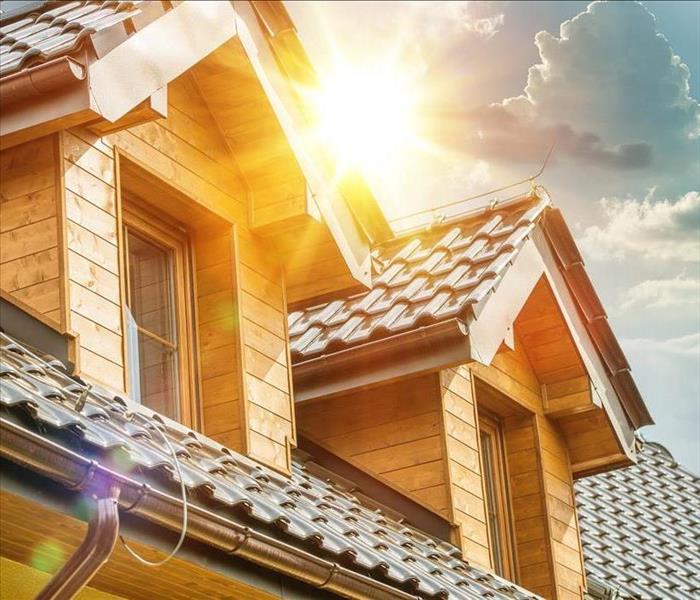 Call your local SERVPRO today!
662-690-6502
Call your local SERVPRO today!
662-690-6502
Summer is here in the South! Follow these 10 helpful tips to protect you and your home this Summer.
1. Close your blinds
Keep your blinds closed, especially on north and west-facing windows, to significantly cool your home. Better yet, invest in some black-out curtains to shield your home from that harsh summer sun.
2. Block the heat
Stopping heat getting into your house in the first place means spending less on cooling. Shade windows and walls using external coverings, like blinds, awnings, or large potted plants. Plant deciduous trees that cast shade over your home in summer, but still let the sun shine through in winter. If you can, invest in window tinting and top up your ceiling insulation – it’ll help keep the warmth in winter, too.
3. Just 1oCmore
If you must use your air-conditioner, set the thermostat to between 24-27oC, or as high as you feel comfortable with. Increasing your thermostat by just 1oC in warm weather can reduce the running cost of your appliance by about 10 percent.
If you’re looking to upgrade your air-conditioner, pick one with a high energy-star rating and do your research to ensure you choose the right type of air-conditioner for your home.
4. Adjust ceiling fans
Sometimes you might feel like ceiling fans just push the hot air around your home rather than cool it down. Well, you’re not wrong – fans that aren’t rotating counter-clockwise may be doing just that!
Set your ceiling fans to rotate counter-clockwise in summer to push air straight down helping to create a cooling effect and clockwise in winter to pull cool air up. In warmer weather, set the fan speed high and in cooler weather, it works best on low. Ceiling fans can also be used to complement other cooling types, so checking they rotate in the correct direction can make a world of difference to the temperature of your home.
5. Close doors and seal gaps
Close doors to rooms you aren’t using to keep cool air where you need it most. Seal gaps around doors and windows, and use draught excluders to ensure the cool air can’t escape.
Note: evaporative air-conditioners will be more effective if you open some doors and windows to increase airflow through the home.
6. Hang out in the evening
Closing your windows and staying inside may be a great idea during the day, but when it gets cooler in the evening you may want to open your house up to cool your home naturally – just make sure you lock up overnight!
Cooking dinner in the backyard or at the park may be a cooler alternative to being in a steamy kitchen too, so make the most of a cool breeze when you can.
7. Chill out, not chill on
Sip icy-cold drinks, apply a damp cloth to your neck and other pressure points on your body or have a cold shower to cool your body without needing to switch the air-conditioner on.
8. Hack a fan
No air-con? No worries! A cleverly-positioned bowl of ice is all you need to turn a fan into a cold mist machine. Place a shallow bowl or pan of ice in front of a fan for an icy-cool breeze that won’t break the bank.
9. Choose cotton
Cotton fabrics are super breathable and help cool your body. Wear light, loose clothing made of breathable fabrics like cotton, and fit your bed with cotton sheets.
10. Change your lightbulbs
If you’re having trouble cooling your home and can’t work out why incandescent lightbulbs might be to blame. These lightbulbs were phased out in Australia years ago, but many homes still use them. They produce a lot of heat, so switching to energy-saving bulbs can help cool your home and save heaps on energy costs – that’s a win-win!
All the information above is provided by-
https://www.environment.sa.gov.au/goodliving/posts/2018/01/keeping-house-cool-efficiently
Here at SERVPRO, we care about our customers and want to always provide five-star service.
Call your local SERVPRO today!
662-690-6502






 24/7 Emergency Service
24/7 Emergency Service







